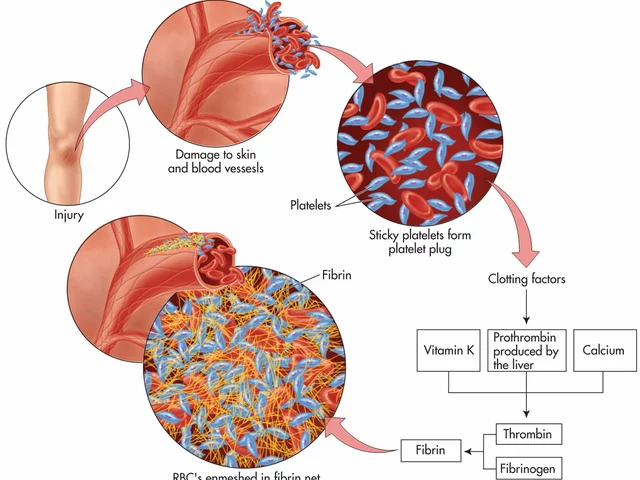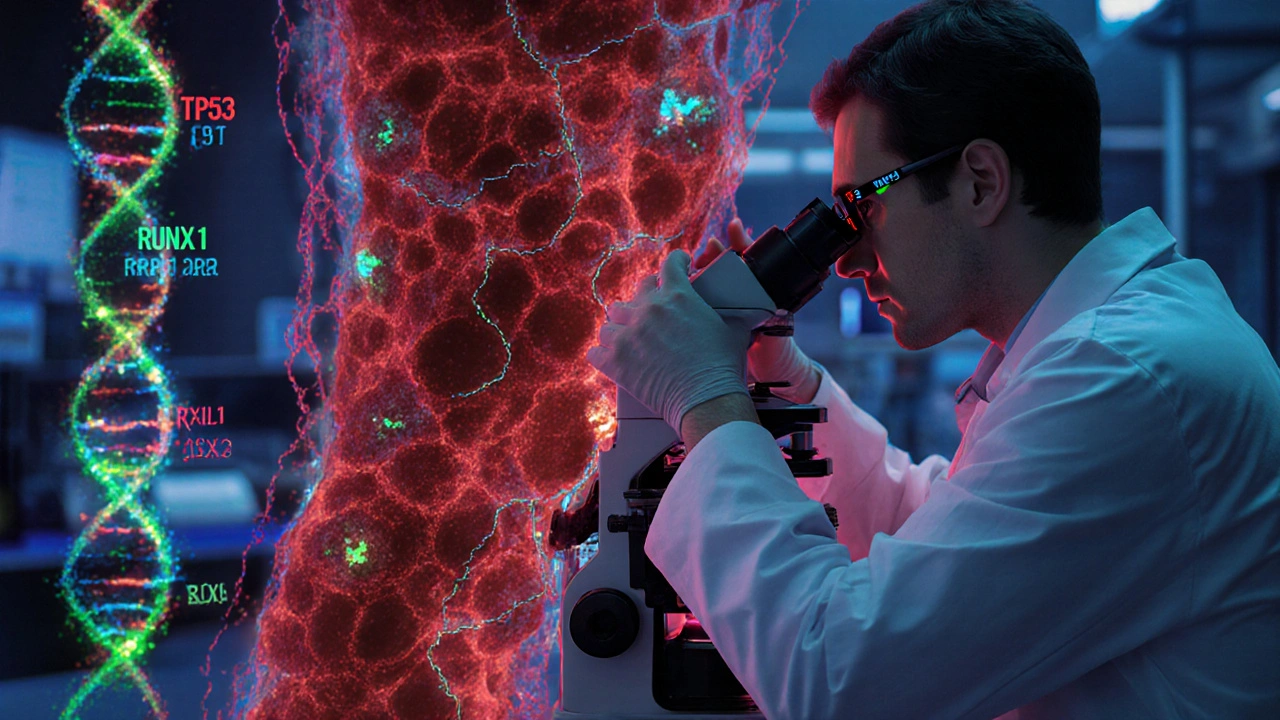Bone Marrow Genetics: Understanding the DNA Blueprint of Blood Production
When exploring bone marrow genetics, the study of DNA variations that control how bone marrow forms blood cells. Also known as hematopoietic genetics, it helps explain why some people develop blood disorders while others stay healthy.
At the heart of this field are hematopoietic stem cells, the multipotent cells residing in marrow that give rise to red cells, white cells, and platelets. These stem cells carry a unique genetic program that decides which lineage they’ll become. When that program runs smoothly, you get a steady supply of healthy blood; when it glitches, conditions like anemia or immunodeficiency can appear.
One of the biggest challenges is pinpointing genetic mutations, heritable or acquired DNA changes that alter stem‑cell behavior. Common culprits include mutations in FLT3, NPM1, or DNMT3A, which are frequently seen in acute myeloid leukemia. Recognizing these mutations early can guide risk assessment and treatment choices, making the difference between watchful waiting and aggressive therapy.
Detecting those changes relies on next‑generation sequencing, high‑throughput technologies that read thousands of genes at once with high sensitivity. By sequencing a patient's marrow sample, clinicians can generate a mutation profile in a few days. This rapid insight fuels personalized medicine, allowing doctors to match patients with targeted drugs that hit the exact molecular flaw.
When mutations are severe, a bone marrow transplant, the replacement of diseased marrow with healthy donor stem cells often becomes the only curative option. The success of a transplant hinges on how well the donor’s stem‑cell genetics align with the recipient’s immune system. Mismatched genetics can trigger graft‑vs‑host disease, while a perfect match promotes engraftment and long‑term remission.
Beyond cancer, bone marrow genetics touches everyday medication decisions. Pharmacogenomic studies show that certain DNA variants in marrow‑derived enzymes influence how patients metabolize drugs like azathioprine or methotrexate. Knowing a patient’s genetic makeup can prevent toxic side‑effects and help select the safest, most affordable generic version—a concern echoed across our medication‑safety guides.
All these pieces—stem‑cell biology, mutation detection, cutting‑edge sequencing, and transplant matching—fit together like a puzzle. By understanding bone marrow genetics, you gain a clearer view of why blood disorders arise and how modern therapies target the root cause. Below, you’ll find a curated selection of articles that dive deeper into related drugs, treatment strategies, and practical tips for navigating the complex world of medicines and genetics.
Genetics of Bone Marrow Disorders: Key Findings and Clinical Impact
Explore how genetic mutations drive bone marrow disorders, the main genes involved, testing options, and emerging therapies in clear, practical terms.
About
Medical Research
Latest Posts


Buy Cialis Black Online: Secure and Fast Delivery Options
By Marcel Kornblum Dec 8, 2023

Why Usnea is Your New Best Friend for Overall Wellness
By Marcel Kornblum Jun 2, 2023

How Massage Therapy Helps Reduce Chronic Diarrhea Symptoms
By Marcel Kornblum Nov 18, 2025

